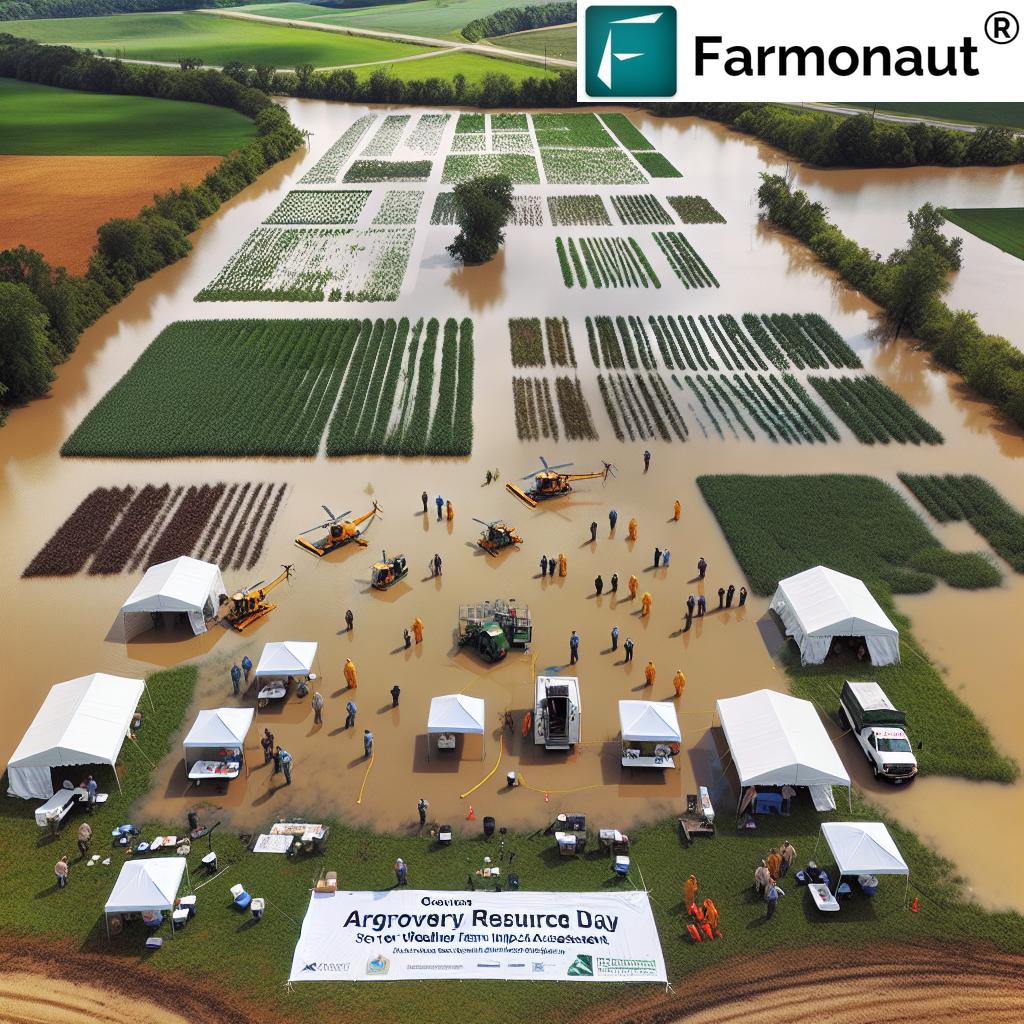Urgent: FEMA’s Lifeline for Virginia Farmers – Exclusive Agriculture Recovery Day Tackles $160M Hurricane Helene Devastation

In a groundbreaking initiative to support agricultural disaster recovery, the Federal Emergency Management Agency (FEMA) has launched its first-ever Agriculture Recovery Resource Day in Virginia. This event comes as a beacon of hope for farmers grappling with the aftermath of Hurricane Helene, which has left an estimated $160 million trail of destruction in its wake.
FEMA’s Rapid Response to Agricultural Crisis
Tuesday marked a pivotal moment for Virginia’s farming community, exactly one month after Governor Glenn Youngkin declared a state of emergency due to Hurricane Helene’s devastation. The FEMA Agriculture Recovery Day Virginia event was meticulously organized to address the urgent needs of farmers facing unprecedented challenges in the wake of the natural disaster.
Timothy Pheil, FEMA’s Federal Coordinating Officer, provided a sobering assessment of the situation. “We’re looking at total agricultural losses in Virginia of approximately $160 million,” Pheil stated. “Shockingly, $60 million of that damage is concentrated in Grayson County alone.”
Grayson County: Ground Zero for Agricultural Losses
Grayson County, long celebrated for its rich agricultural heritage, bore the brunt of Hurricane Helene’s fury on September 27, 2023. The storm’s impact was particularly devastating to the region’s farming sector, prompting an urgent need for comprehensive disaster assistance for farmers.
Dennis Cox, a lifelong resident and farmer in Grayson County, shared his perspective on the destruction. “From what damage I have, I could understand how that millions of dollars would be damaged,” Cox remarked, his words underscoring the scale of the devastation.

The Struggle for Recovery: One Farmer’s Story
Cox’s family farm, a testament to two centuries of agricultural tradition, now stands as a symbol of both devastation and resilience. “It’s amazing what the power of the water could do,” Cox reflected, describing the flooding that ravaged his land.
A month after Helene’s landfall, Cox, like many of his fellow farmers, continues to work tirelessly towards recovery. His daily routine has transformed into a grueling regimen of cleanup and restoration:
- Rebuilding fences destroyed by floodwaters
- Clearing debris from creeks and ditches
- Removing mud and sand deposits from fields
- Striving to restore a semblance of normalcy to farm operations
For farmers like Cox, the FEMA Agriculture Recovery Resource Day represented a crucial opportunity to access much-needed support and guidance in their farm flood recovery efforts.
FEMA’s Comprehensive Approach to Agricultural Recovery
The Agriculture Recovery Resource Day was designed as a one-stop shop for farmers seeking assistance in their recovery journey. Timothy Pheil emphasized the event’s significance: “We’re doing this day specifically for the farmers in the community, Grayson and the nearby communities that need resources, need an opportunity to come talk and regain hope that the devastation that Helene caused is not going to stop them, that there’s opportunities for them to start their own recovery process.”
This initiative brought together an impressive array of over 15 federal, state, and local agencies, all united in their mission to provide comprehensive Virginia farmers disaster assistance. The event offered a unique platform for farmers to explore various agricultural recovery programs and connect directly with experts who could guide them through the complex process of rebuilding their livelihoods.
Key Resources Offered at the Agriculture Recovery Day
- Financial Assistance Programs: Information on loans and grants specifically tailored for agricultural disaster recovery.
- Technical Support: Expert advice on soil restoration, crop replanning, and livestock management post-disaster.
- Infrastructure Rehabilitation: Guidance on repairing farm structures, irrigation systems, and equipment damaged by the hurricane.
- Mental Health Resources: Support services to help farmers cope with the stress and emotional toll of the disaster.
- Long-term Recovery Planning: Assistance in developing strategies to build more resilient farming operations.
Pheil was quick to emphasize that these programs are not charity but a rightful return on farmers’ investments in their communities. “These programs exist for a reason. They’re paid for by their tax dollars. This is not a handout,” he explained. “This is a return for what’s been happening, the devastation that has occurred.”
Innovative Solutions for Modern Farmers
In addition to traditional recovery methods, the event showcased innovative technologies that can aid in Hurricane Helene farm damage recovery. One such solution is the Farmonaut app, which provides valuable insights for agricultural management and disaster preparedness.
Farmers can also access critical data through the Farmonaut Satellite API, offering real-time information crucial for recovery planning. For those interested in leveraging this technology, detailed information is available in the API Developer Docs.
Mobile apps are proving to be invaluable tools in agricultural recovery efforts:
A Community United in Recovery
The response to the Agriculture Recovery Resource Day was overwhelmingly positive. Farmers like Dennis Cox found the event to be an invaluable resource in their quest for recovery. “I thought it really was exceptionally good, considering what we are and where we are located,” Cox remarked. “As far as the people that was willing to help and do anything, FEMA and all the governor organizations, was really great.”
This event marks a significant milestone in the Hurricane recovery for Virginia agriculture, demonstrating the power of community resilience and the importance of targeted support for the farming sector. As Virginia’s agricultural community begins its long journey to recovery, the collaboration between federal agencies, local organizations, and farmers themselves serves as a model for effective disaster response in rural America.
Looking Ahead: The Road to Agricultural Resilience
As the immediate response phase transitions into long-term recovery, the focus shifts to building a more resilient agricultural sector in Virginia. This includes:
- Implementing advanced flood mitigation strategies
- Adopting climate-smart farming practices
- Enhancing early warning systems for extreme weather events
- Strengthening community support networks for farmers
The FEMA support for flood-affected farmers extends beyond immediate relief, aiming to create a sustainable framework for future disaster preparedness and response. This holistic approach ensures that Virginia’s farming communities are not just recovering from Hurricane Helene but are also better equipped to face future challenges.
As Virginia’s farmers continue their recovery journey, the Agriculture Recovery Resource Day stands as a testament to the resilience of the agricultural community and the power of coordinated support. With continued access to Virginia farm recovery resources and innovative solutions, the state’s agricultural sector is poised not just to recover but to emerge stronger and more resilient than ever before.
For ongoing updates and resources related to agricultural recovery in Virginia, farmers and community members are encouraged to stay connected with FEMA and local agricultural agencies. Together, Virginia’s farming community is writing a new chapter of resilience, turning the devastation of Hurricane Helene into an opportunity for growth, innovation, and renewed strength in the face of adversity.


